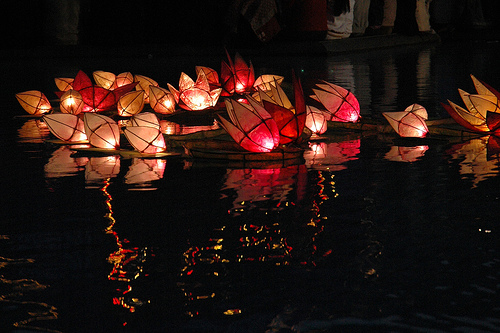The annual Diwali Festival which has just been, also known as the “festival of lights,” is a Hindu tradition that is celebrated in many countries including India, Sri Lanka, Singapore, and Trinidad and Tobago. It is an official holiday that starts the Hindu New Year and winter and runs from three to five days from mid-October to the middle of November. Each day has its own meaning and its own rituals. Wherever you decide to celebrate Diwali in India, it is important to know what each day represents and how it is celebrated.
Dhanatrayodashi or Dhanteras
The first day of Diwali is known as Dhanteras. Dhan means “wealth” and teras means “thirteenth day.” Many parts of India light lamps for the God of Death, Lord Yamaraj. The day also holds special blessings for the Goddess of Wealth, Lakshmi. It is believed that Lakshmi enters every home, visiting the cleanest first. Therefore, everyone tries to make their homes spotless so theirs will be the first she visits.
Chhoti Diwali or Narak chaturdashi
This is the day that is celebrated with lots of fireworks in celebration of Lord Krishna who freed the world from fear upon defeating the demon Narakasur. The fireworks are set off by families dressed in silk garments and gold jewellery and there is much merriment and time spent with family and friends in a very festive atmosphere.
Lakshmi Puja or Lakshmipujan (Diwali)
This is the actual day known as Diwali, the new moon day. It is the dark fortnight of Ashwin or Aswayauja and is the most important day in which the house must be clean for the Goddess Lakshmi. The entrances of homes are lit with clay lamps. This is also considered the most significant day of the festival when tradition includes exchanging gifts, sweets, and savory foods with both family and friends as a means to bring everyone closer. It is also a day that businesses start the new business year by performing Chopda Pujan. More fireworks are set off in the evening.
Balipratipada, Padiwa, Goverdhan puja, or Varshapratipada
This forth day of the festival is the beginning of the bright fortnight Kartik, the day King Vikramaditya was crowned after Lord Krishna lifted Govardhan Parvat, the Govardhan Mountain, on his little finger for the Gokul people, protecting them from Indra’s wrath. Indra intended to bring torrential rains down upon them for seven days, which would have devastated them. This is the day when prayers are offered in the temples and deities are bathed in milk, then adorned with precious jewels such as diamonds and rubies. Most families also dress in new clothes and jewelry.
Bhai Dooj or Bhaiya Dooj
The fifth and last day of the festival includes special rituals between brothers and sisters to show their love for one another. Brothers go to their sisters’ homes where the sisters apply the red tilak, a dot or vertical red line, to the foreheads of their brothers and pray for their long life. Brothers bless their sisters and give them special gifts to show their love.
Different regions of India celebrate Diwali with some variations, so rituals may not be the same everywhere. Some areas start the celebration on the fourteenth day rather than the thirteenth. Each day everyone begins the festivities very early by doing their normal pujas, a ritual offering to deities and special people they revere.
The festival has changed due to technology too. Clay lamps might be replaced with beautiful electric lights and clothing may vary by region. Though Diwali is celebrated with some variation throughout India, its importance is as strong as it has ever been.


